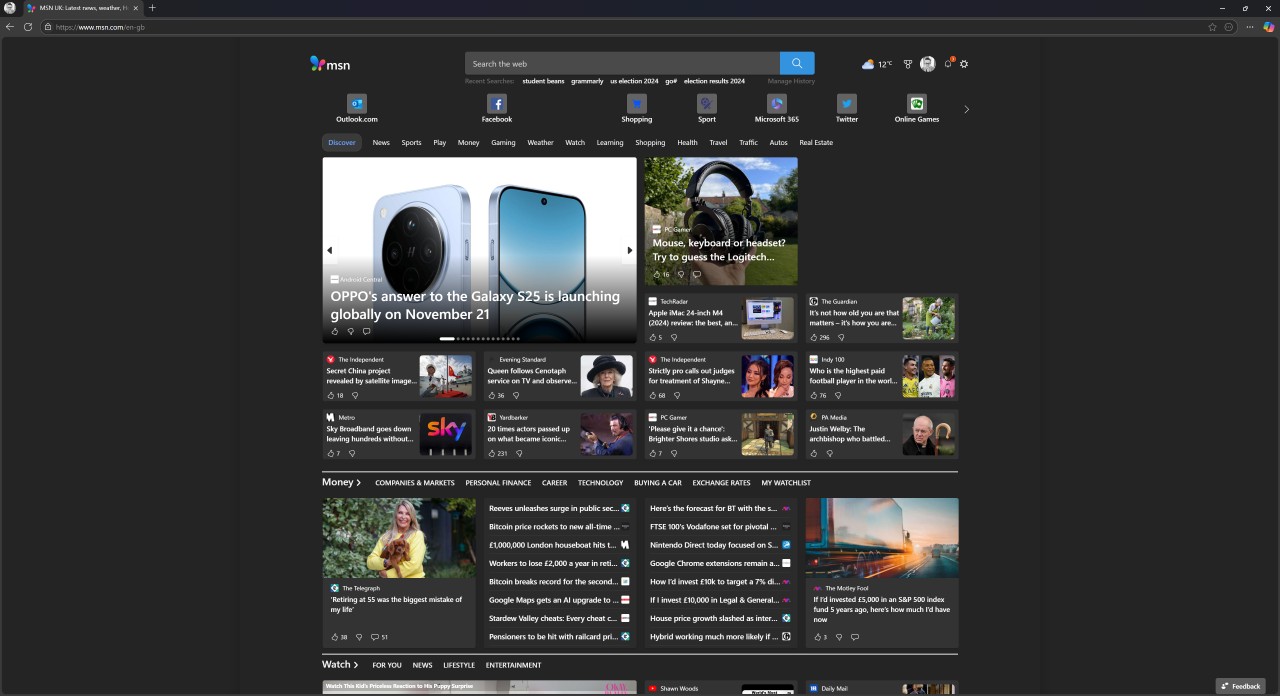What you need to know
- Microsoft is revitalizing the MSN brand with a fresh new logo as it replaces “Microsoft Start” branding in Edge.
- In a statement to Windows Central, Microsoft has confirmed that it’s unifying its news content services under the MSN brand once again.
- Microsoft rebranded many MSN services to “Microsoft Start” in 2021, but now seems to be reversing on that decision.
Last week, users began noticing that the Microsoft Start website and new tab page in Edge had been updated with a new MSN logo, seemingly replacing the Microsoft Start branding in many key areas. The new logo features Microsoft’s modern design language, which has been applied to the iconic MSN butterfly.
In a statement to Windows Central, a Microsoft spokesperson confirmed that the company is moving its news content services back under the MSN brand:
“We regularly review our offerings to ensure we’re delivering the highest value for customers. As part of this review process, we are unifying our content services under the MSN brand to better simplify our experiences. There will be no impact on functionality as part of this change.”
It’s worth pointing out that even when Microsoft moved to the Microsoft Start branding in 2021, the company never fully retired MSN. The MSN.com homepage remained online, but articles and content would redirect to the Microsoft Start website if you wanted to read more. Now, everything appears to be going back under the MSN brand, with the Start.com and MicrosoftStart.com domains and articles redirecting to MSN.com.
The company hasn’t confirmed whether it’s planning to rebrand the Microsoft Start mobile apps back to MSN, but it’s clear that the content served within them will remain under the MSN umbrella going forward. Microsoft had originally intended to create “the everything app” with Start, similar to WeChat in China, an app that does everything from social networking to news, video, gaming, and payments.
MSN first launched in 1995 alongside Windows 95 as a subscription-based dial-up service before becoming the MSN.com web portal we’re all familiar with in 1998. It’s been the default home page of Internet Explorer and Microsoft Edge, and it’s also integrated directly into the Windows 10 and Windows 11 Taskbar via the News & Interests and Widgets flyout.
Because of this, MSN is still viewed by millions of people a day. In 2005, it was the second most visited portal website globally. MSN was also the brand used for many of Microsoft’s internet services in the late 90s and early 2000s, including MSN Messenger, MSN Hotmail, and MSN Search, eventually replaced or renamed to Skype, Outlook, and Bing. In fact, most online Microsoft services from that era began life as an “MSN” product.
Today, MSN mainly exists as a news aggregator website, along with a few spin-off services such as MSN Weather, MSN Money, and MSN Gaming for online, browser-based games. While the brand is still recognizable, it’s not as strong as it used to be. Similar to AOL, it’s a recognized name from a bygone era. Still, the nostalgia around the brand is strong, which is likely worth more than an unrecognized brand like “Start.”





